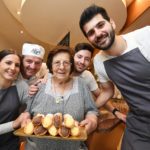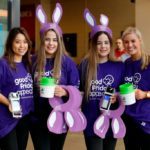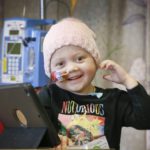The limb difference clinic takes loss — a missing limb detected on a prenatal scan, or an amputation needed after an accident or cancer diagnosis — and creates the chance for these children to do just what their peers are doing — and often so much more.
This is the factory floor where Paralympians are made. Walk the allied health therapy rooms at the Royal Children’s Hospital and you will see children, tongue-out in concentration, trying out their prosthetic device. From the look on their face, they can already imagine how their new leg or foot, a new device for them to hold a bike handle or riding reins, will help them do the things their friends are doing.
A team of eight specialists work together to help each child, including two prosthetists and orthotists who design, fit and monitor each device.
A physiotherapist and occupational therapist help the children develop the physical skills needed to use each device, made by the prosthetic technician.
An orthopaedic surgeon performs amputations and revision surgeries, while a social worker helps the family with counselling and advocacy.
And given each child is different, there is no one off-the-shelf product that will be the perfect fit. It takes ingenuity, creativity and perseverance to get the right answer for each child at every age.
Sebastian, 4 yrs old
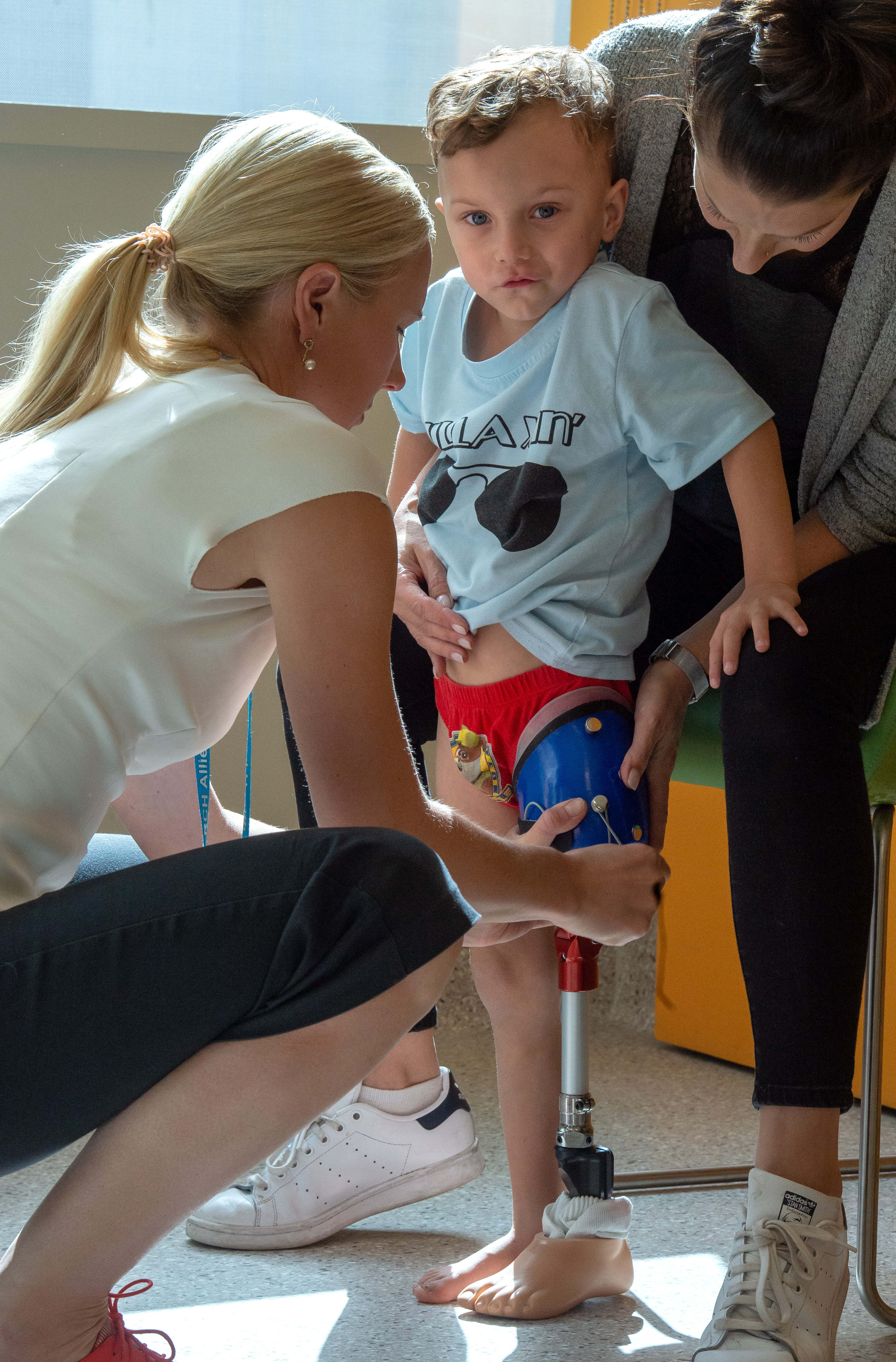
It was clear four-year-old Sebastian could already picture himself sitting in his future prep class room when prosthetist Phoebe Thomson showed him his latest prosthetic.
The four-year-old’s latest leg — his sixth — is the first he has had with a knee joint. It will allow him to sit on a chair with both feet on the floor when he starts school next year.
It has been a monumental technical challenge to develop a leg with enough stability. Sebastian has just 5cm of his right thigh bone remaining — the highest amputation the RCH prosthetics team has come across.
Born at 27 weeks and weighing just 890g, Sebastian had his leg amputated when he was two weeks old to save his life from an invading infection after the leg was injured during pregnancy.
“He’s just started asking questions about his leg, a bit earlier than I expected,” said his mum, Mel.
“He asks, ‘Will my leg grow back? Why can’t I have two legs? Why did you let them take my leg?’ “It breaks my heart, but with this new leg he will look like everyone else in the class — something that’s becoming more important to him.”
Zara, 6 yrs old
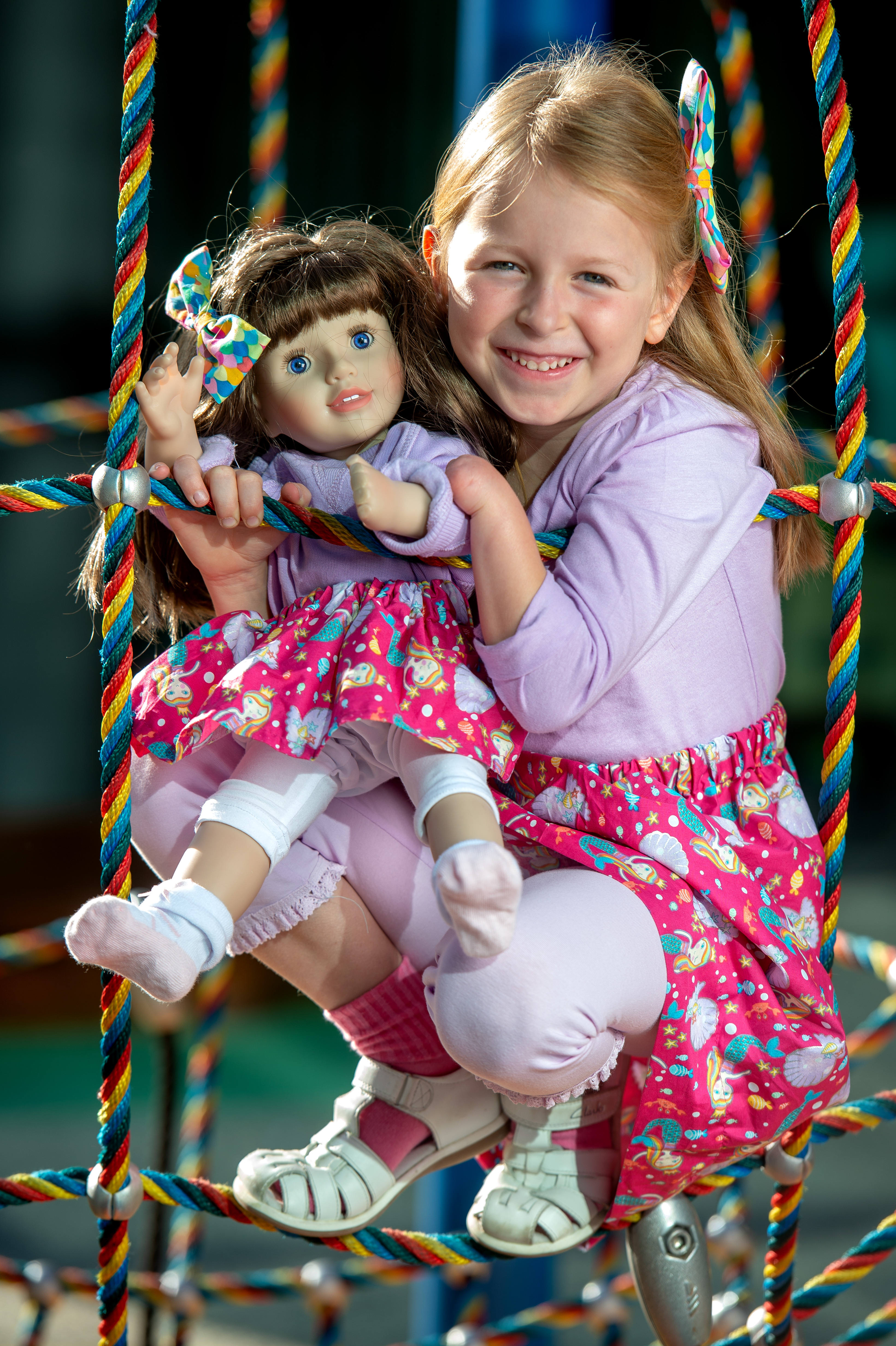
The limb difference clinic has helped Zara confirm that she belongs.
Her mother, Trina, remembers vividly the heartbreak of watching her daughter checking each doll she played with as a toddler, inspecting their hands. “She would slump down because they all had fingers. She was aware of it,” Mrs Bond said.
With nothing on the market and getting little help from doll restorers, she turned to the RCH. Prosthetist and orthotist Meleita Finnegan and prosthetic technician Leo Mouratidis took Tamika the doll to their workshop to make a series of alterations so she looked just like her owner.
“She could not stop hugging it,” Mrs Bond said. “They’ve said anything you can think of that she needs, we will come up with a way of creating it for you. It’s an amazing service.”
Zara has had a prosthetic device made so she can ride a bike or scooter, and the team will make a left-handed pick device so she can play guitar, further confirming that Zara can do anything other kids can do — an ethos that has firmly rubbed off on the grade one student.
When a classmate asked on the first day of school why Zara didn’t have any fingers on her left hand, she stood up confidently in front of the class. “She tells them: ‘That’s how I was born. When I was in my Mummy’s tummy, one hand grew fingers and one hand didn’t. But it doesn’t stop me doing anything. Watch me, I can do anything you can do’,” Mrs Bond said.
Originally published in the Herald Sun, April 18, 2019
Words: Brigid O’Connell
Images: Jay Town
Read the original story on the Herald Sun website

